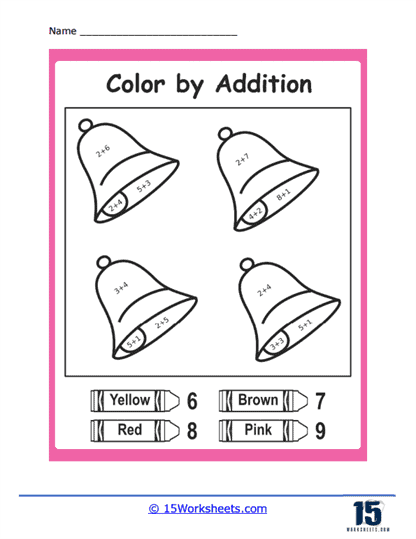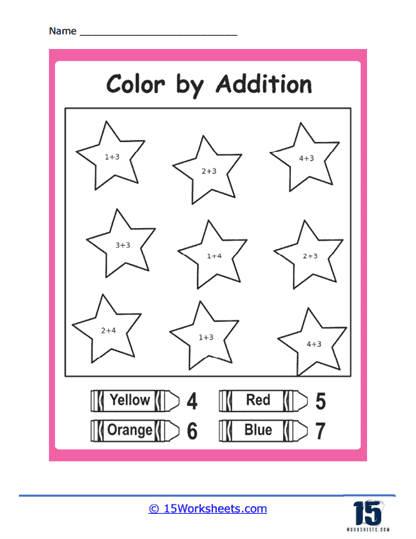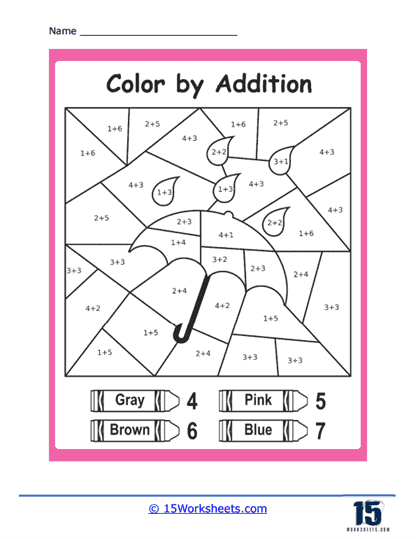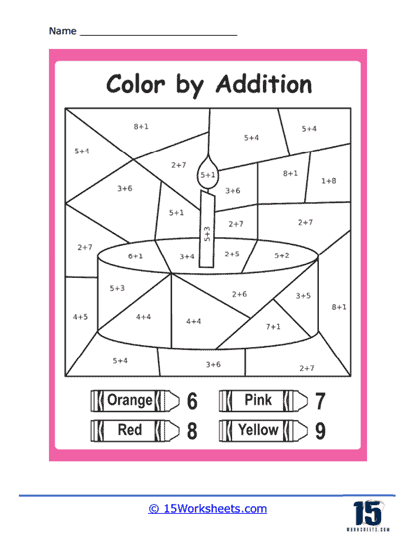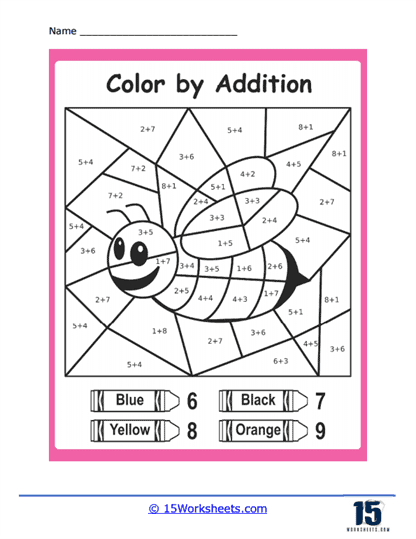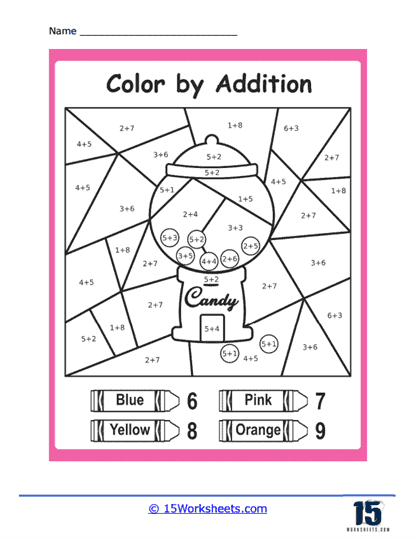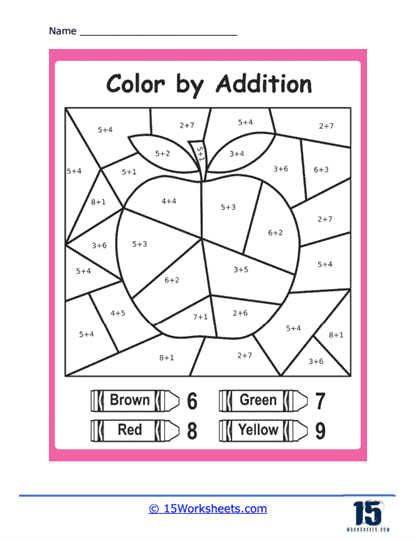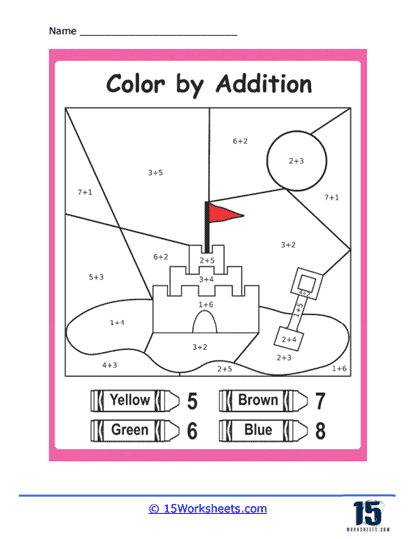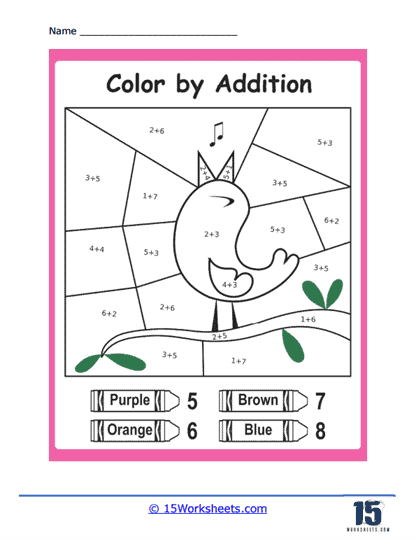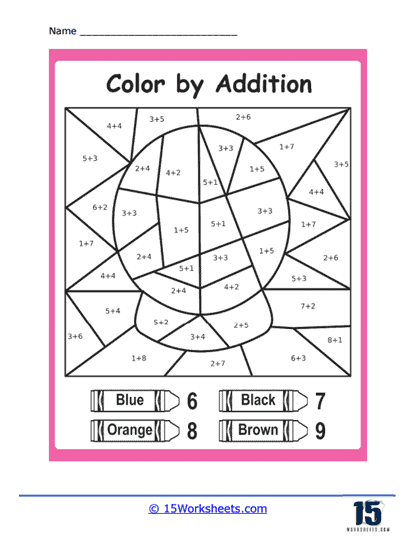Color By Adding Numbers Worksheets
About These 15 Worksheets
These worksheets will help children practice their addition skills while also engaging their creativity and fine motor skills. They blend math with art in a fun, engaging manner which can make learning more enjoyable. They contain a picture that is divided into different sections, each labeled with a simple addition problem. Along with the worksheet, there’s a color key provided which assigns a certain color to each possible answer.
By the time all of the addition problems are solved and the entire picture is colored in, the worksheet serves not only as evidence of the child’s math work but also a piece of art that the child has created. These worksheets cover a variety of addition problems, from very simple sums for young learners who are just starting out with addition to more complex problems for older or more advanced students. They can be a fun way to practice math skills, and the resulting colorful picture can also provide a sense of accomplishment.
Step aside, Picasso-there’s a new generation of artists in town, armed with crayons and a knack for addition! Our worksheet collection is transforming math time into a vibrant adventure. Imagine a world where solving 3 + 4 doesn’t just give you 7-it unlocks the secret to coloring an ice pop the perfect shade of red. From “Adding Ice Popsicles” to “School Bell Sums,” these worksheets turn simple sums into masterpieces, one colorful equation at a time.
But wait, there’s more! Ever wanted to see what happens when math meets dessert? Dive into “Ice Cream Cone Adding” and “Birthday Cake Addition,” where each correct answer adds a scoop or a candle to your sugary creation. Feeling a bit more whimsical? “Star Power Sum” and “Crystal Ball Addition” let students peer into the cosmos and their future, revealing that the path to success is paved with correct calculations and a splash of color.
Nature enthusiasts aren’t left out either. “Umbrella and Raindrops Math” ensures that every drop is accounted for, while “Bumble Bee Sum” and “Singing Bird” bring the outdoors inside, minus the allergies. And for those who believe math should be a beach, “Sandcastle Sums” offers a sandy escape where numbers build more than just castles-they build confidence.
In the end, these worksheets do more than just teach addition; they make math an engaging, laugh-out-loud experience. Whether it’s coloring a “Puppy Dog Adding” page or solving the “Gumball Machine Puzzle,” students are not just learning-they’re creating, laughing, and discovering that math isn’t just numbers on a page. It’s a colorful journey filled with surprises, giggles, and the occasional candy-colored revelation.
What Are The Benefits Of These Worksheets?
Improved Differentiation and Pattern Recognition
Color can help students visually differentiate between different mathematical symbols, numbers, or operations, which can help them better understand mathematical concepts. For example, in a long equation, color-coding operations (e.g., addition in blue, subtraction in red) could help students understand the order of operations. Colors can make patterns and relationships more visible. For instance addition math facts with different addends become clear to students when different addends result in the same sum and in this case the same color.
Memory and Engagement
Associating different colors with different numbers or operations can aid in memory retention. Colors are often easier to remember than abstract symbols, so color-coding can make math more memorable. Coloring adds an element of fun and creativity to math, which can increase student engagement. This is particularly the case for younger students or visual learners.
Self-Correction and Fine Motor Skills
Because each color corresponds to a specific answer, students can often see for themselves if they’ve made a mistake based on whether their picture looks correct. This encourages self-correction and problem-solving skills. It also helps them develop fine motor skills by using coloring tools.


